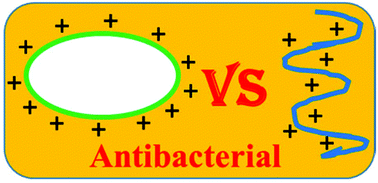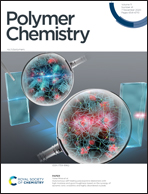Antibacterial properties of synthesized cyclic and linear cationic copolymers†
Abstract
Cationic polymers are one of the main classes of materials investigated against bacteria through the membrane-lysis mechanism. The cationic–hydrophobic balance, molecular structure and distribution of cationic and hydrophobic moieties of these polymers are known to have a major effect on the antimicrobial activity. We have synthesized cyclic poly(2-(dimethylamino)ethyl methacrylate) (PDMAEMA) based copolymers with various components by the intra-chain click cyclization of α-alkyne-ω-azido hetero-difunctional linear precursors prepared via atom transfer radical polymerization (ATRP). Copolymers were characterized by GPC, FT-IR and NMR to confirm efficient cyclization. Cyclic cationic copolymers with smaller hydrodynamic volumes and compact structures attracted by negatively charged bacterial cell membranes cause membrane disruption much more easily compared to their linear analogues, showing better antibacterial performance than their linear counterparts. In addition, the cytotoxicities of the cyclic cationic copolymers were also a little lower than those of their linear copolymers.



 Please wait while we load your content...
Please wait while we load your content...